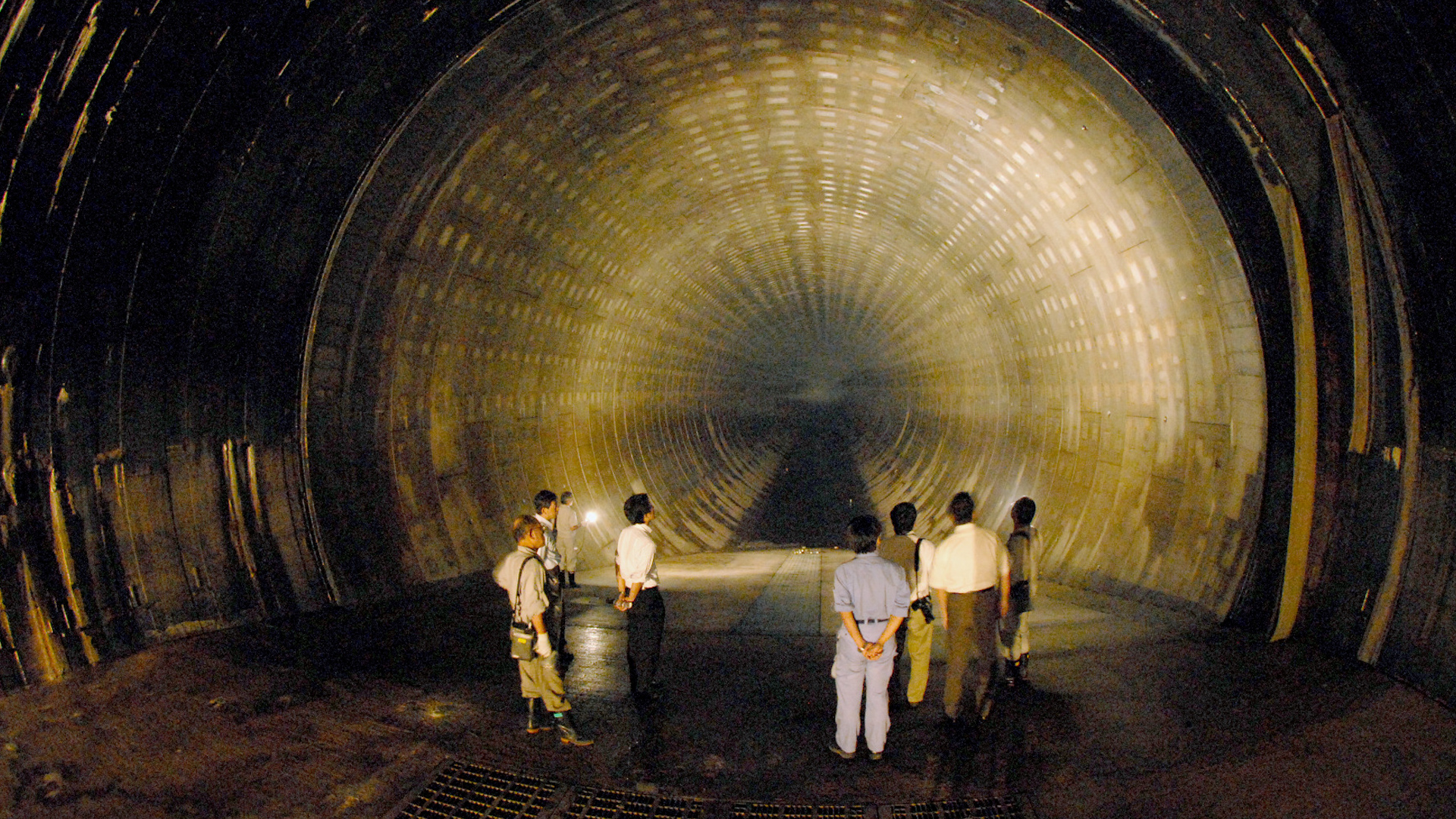
[Craig Nigrelli]
TOKYO HAS LONG FOUGHT THE BATTLE AGAINST INTENSE RAINFALL, BUT WITH CLIMATE CHANGE FUELING MORE EXTREME STORMS, THE CITY IS RACING TO UPGRADE ITS FLOOD DEFENSES.
IN AUGUST 2024, TYPHOON SHANSHAN BROUGHT TORRENTIAL RAIN TO TOKYO, EVEN THOUGH THE STORM’S CENTER WAS NEARLY 400 MILES AWAY. THE STORM FILLED A VAST UNDERGROUND RESERVOIR KNOWN AS THE “CATHEDRAL,” PART OF TOKYO’S MASSIVE FLOOD CONTROL SYSTEM THAT HAS BEEN A CRITICAL LINE OF DEFENSE SINCE 2006.
THIS NETWORK OF TUNNELS AND RESERVOIRS SPANS OVER FOUR MILES AND HAS SAVED TOKYO FROM BILLIONS OF DOLLARS IN POTENTIAL FLOOD DAMAGE BY DIVERTING WATER AWAY FROM DENSELY POPULATED AREAS. THE “CATHEDRAL” CHAMBER, LOCATED SIX STORIES UNDERGROUND, CONTAINS 59 MASSIVE PILLARS THAT EACH WEIGH MORE THAN 1.1 MILLION POUNDS AND STAND NEARLY 60 FEET TALL.
THE RESERVOIR IS CAPABLE OF HOLDING NEARLY 100 OLYMPIC-SIZED SWIMMING POOLS WORTH OF WATER. THE CHAMBER’S DROP SHAFT IS LARGE ENOUGH TO FIT THE STATUE OF LIBERTY INSIDE.
DESPITE THE SYSTEM’S CAPABILITIES, OFFICIALS SAY TOKYO’S DEFENSES ARE BEING STRAINED AS STORMS GROW MORE FREQUENT AND SEVERE. EXTREME WEATHER EVENTS, INCLUDING SUDDEN DOWNPOURS THAT RELEASE LARGE AMOUNTS OF RAIN IN A SHORT TIME, ARE TESTING THE CITY’S INFRASTRUCTURE. IN RESPONSE, TOKYO IS LAUNCHING A SEVEN-YEAR, $250 MILLION INITIATIVE TO EXPAND AND UPGRADE ITS FLOOD DEFENSE SYSTEMS. THIS INCLUDES REINFORCING LEVEES, IMPROVING DRAINAGE SYSTEMS, AND CONSTRUCTING NEW RESERVOIRS TO INCREASE WATER STORAGE CAPACITY.
TOKYO’S CURRENT SEWER NETWORK IS DESIGNED TO HANDLE UP TO 3 INCHES OF RAIN PER HOUR, BUT RECENT STORMS HAVE BROUGHT AS MUCH AS 4 INCHES PER HOUR, PUSHING THE SYSTEM BEYOND ITS LIMITS. NEW PROJECTS AIM TO RAISE THIS THRESHOLD TO BETTER MANAGE THESE EXTREME WEATHER EVENTS.
TOKYO’S UNDERGROUND DISCHARGE CHANNEL, BUILT AT A COST OF $1.63 BILLION, HAS BECOME A GLOBAL MODEL FOR URBAN FLOOD CONTROL. SINCE ITS COMPLETION, THE SYSTEM HAS BEEN ACTIVATED MORE FREQUENTLY AS HEAVY RAINS BECOME MORE COMMON. DURING TYPHOON SHANSHAN, THE SYSTEM CAPTURED ENOUGH WATER TO FILL TOKYO’S DOME BASEBALL STADIUM FOUR TIMES OVER, PREVENTING MAJOR FLOODING IN THE CITY.
FOR MORE OF OUR UNBIASED — STRAIGHT FACTS REPORTING — DOWNLOAD THE STRAIGHT ARROW NEWS APP OR VISIT US AT SAN – DOT – COM.





